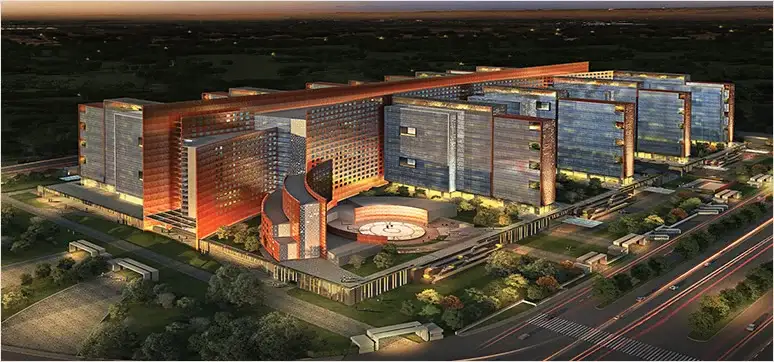Morphogenesis is a 21-year-old architectural firm founded by architects Sonali and Manit Rastogi. Ever since their inception in 1996, Morphogenesis has had a reputation of being an innovative practice at the forefront of thought leadership in design. They look at all aspects of the context and arrive at an innovative response to the physical, geographical and cultural conditions that address the user brief, and ultimately aspiration. They have done over 450 projects across India, Bangladesh, Nepal, Sri Lanka, South Africa and the UAE. Morphogenesis has over 130 professionals in Delhi and Bangalore offices. Recipient of over 80 international and national awards, Morphogenesis provides specialized services in distinct verticals like master planning, residential, commercial, workplace, institutional, hospitality, interiors and landscape designs, all with a strong backbone of ‘Green Design’ The distinguished architects, Manit Rastogi and Sonali Rastogi candidly spoke to WFM about their professional journey spanning 21 years, their innovative approach to working on sustainable buildings, their current projects, their future goals and design intentions, and much more.
WFM: Tell us about your firm Morphogenesis and your journey as an architect.
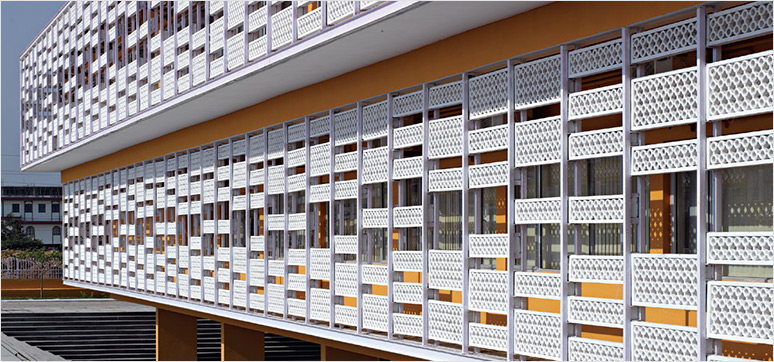
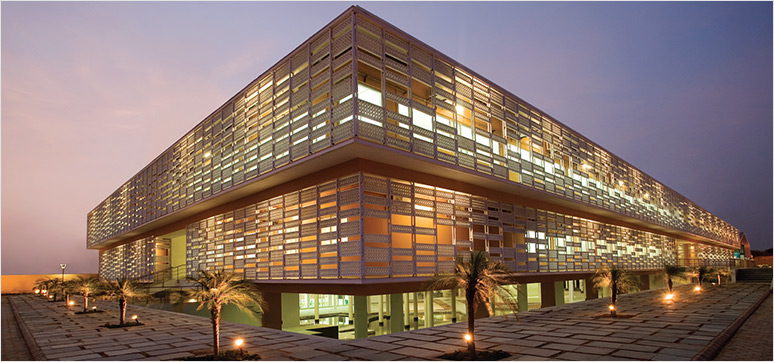
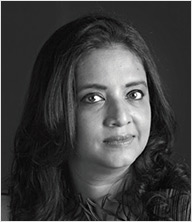
Sonali Rastogi (SR): I come from a family of architects. My parents are architects and I am married to an architect (Manit Rastogi). We run the firm together. So for me, my entire life is an architectural sojourn. Our practice is now 21 years old.
Manit and I were students of SPA Delhi. Then we studied at the Architectural Association (AA), London. While we were at AA, we attended a number of design dialogues and discourses on architecture from around the world. We noticed that, in such events, there was a completely missing component of Indian architecture within the global perspective. We developed a deep desire to become a part of the architectural language which was being discussed world over, and also to showcase what would be an Indian architectural fit for today. With that kind of challenge and drive in our head, we returned to India to set up this practice called Morphogenesis in the year 1996, and it has been a phenomenal 21 years.
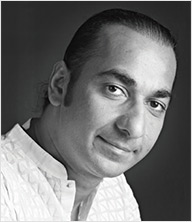
(MR): Our journey as a practice has been captured in our monograph ‘ Morphogenesis | The Indian Perspective, The Global Context’ that we wrote to commemorate our 20 year anniversary. The process of compiling the book was significant and it allowed us to formally document and review our learnings over the past 20 years, consequently enabling us to even better define our vision, for the next 20.
WFM: Please tell us about your iconic projects?
MR: It is difficult for an architect to define ‘what is iconic’, when you look back and analyse the 21 years of our journey. Design for us is an outcome of a process of enquiry and a drive for innovation. So, for a person who is part of the creative process, it is very difficult to call something iconic or not iconic. But, I think for me, the Pearl Academy was iconic because it was one of our lowest cost projects, derived largely from vernacular architecture, which achieved a new benchmark in sustainability. Also it has visually caught the imagination of the world and has won many international awards.
SR: To me, our first major project, Apollo Tyres Corporate Office, stands out as iconic, because the first is always very close to one’s heart.
Currently we are doing the Zydus Corporate Office in Ahmedabad which is a very unusual looking project, made of a series of doubly curved walls. It is inspired from vernacular architecture of forts in the region, in its detail. But it has an inclusive global character, where its construction technology is very special and the design itself is a new learning experience. All these combined make the project an iconic one.
WFM: One of your ongoing projects is totally net zero. Could you please tell us about the project?
SR: We attempt to build most of our projects to be net zero enabled. By the use of passive design, sustainable construction technologies and optimised use of materials, we bring down the energy consumption (measured by the Energy Performance Index or EPI) of a building to the lowest possible. We at Morphogenesis have managed to bring down the EPI of our buildings to as low as 25kWh/sqm/yr, which is more than 70% improvement over even Green benchmarks. It is then far more realistic to offset this reduced requirement by renewables, hence being as close to net-zero enabled as possible.
The campus designed for Infosys Ltd., Nagpur would be a net zero on energy, water and waste discharge. It would push us towards delivering one of the world’s most energy efficient buildings, and enabling the aim to build the world’s most sustainable office building.
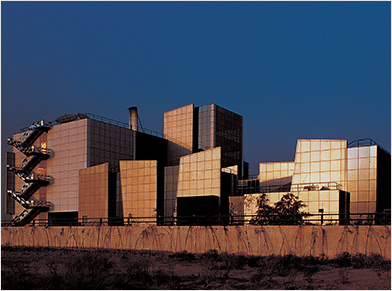
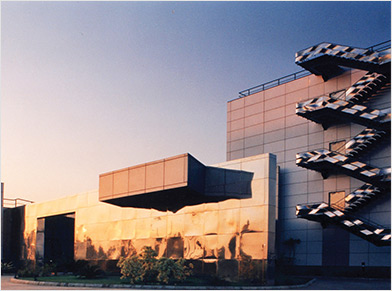
WFM: Could you please tell me about your design approach?
MR: Design is a subjective process where how much ever one tries, approach is hard to define. But one of the approaches has been always to look at it from its first principles, for instance:
- What are the resources available at our hand?
- How can the project be more sustainable, not just in terms of energy, but considering sociocultural aspects too?
The architecture should enable the local population in some way. It needs to be responsive to its context, yet not so deeply immersed in history that it cannot find a global position for itself.
SR: We have a lot of conversations among our team members. Morphogenesis is a believer in the collective. We always try to approach projects from a fresh perspective when a team is assigned a job. This is why, though we do work within a contemporary format, it is difficult to stereo type a Morphogenesis style or our projects. Each time we try to remove ourselves from defined, static aesthetics and approach the project afresh.
WFM: According to you, what is a green building and what is a sustainable design?
SR: When we started this practice 21 years ago, the concept of green building for a common man was the mud hut with terrace garden. The definition as it currently stands is that a green building is one with least possible energy consumption to construct and run that building. Sustainability depends on materials used- recycled or locally procured, etc. Green is about the total possibility of how you use the energy in the building and how little you consume. Green is not dependent on whether the building is high-rise or a low-rise, or a hut.
MR: The most basic design principle for sustainability is to examine for the product that one intends to create. A project needs to be looked at as a problem at hand, and one has to find an apt solution which ought to be sustainable. I don’t believe that there is any single type of building or typology which cannot be looked upon in a sustainable way.
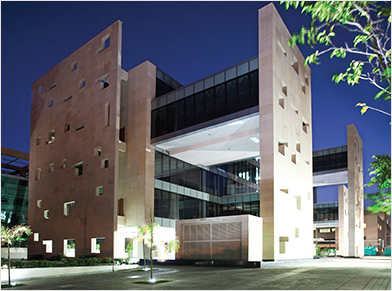
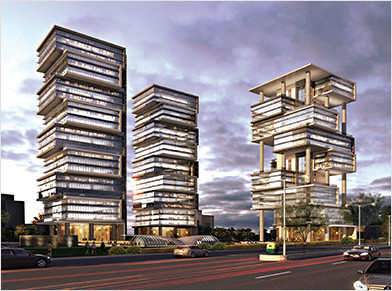
WFM: Please explain some of your innovative approaches which you have considered for your highrise projects?
MR: One of the most innovative and simplest approaches that an architect can use is passive design techniques. I think the maximum environmental gain, hence innovation, can come out of building orientation and morphology. For example, in our climate, if we design all the glazing facing west and make it top to bottom glazing, then we are not being sustainable. Understanding and designing according to the orientation of the building, sun path and specifications like thermal value, U value, thermal lag, etc., which are the basic principles of building physics, are very important. Once an architect understands these specifications, and designs the building morphology to fit these specifications, then 50 percent of the energy problems are solved.
WFM: What are the greatest challenges that you have come across while designing an environmentally friendly, sustainable building?
MR: I would say that, today we do not face any challenge. These days, people come looking for sustainable designs and technologies because they have understood that sustainable designs not only cut the construction cost and running cost, but it could be the USP for selling their product. I think, this issue was a major one, i.e., to understand what is sustainability, when we started our firm, not anymore.
SR: One challenge that needs addressing is looking at the cost of the project, not based on individual components or materials, but as a combination of materials. The challenge is to make people see the whole scheme as an integrated development.
For example, the shading fins in the west and south of a building is not something which can be worked separately from its glass facade. But if we add a double skin façade, we cannot reduce the shading, neither can we go for cheaper or lesser quality glass somewhere else in the project. This is a major problem.
If you are designing in an integrated fashion for an overall performance index, you should not start taking out each object of the façade separately and calculate how much cost could be cut out of it. By doing so, the desired envelope design and its performance cannot be achieved. Moreover, we cannot achieve a façade that pushes the boundaries, both aesthetically and functionally.
WFM: Please describe the role of façade in building sustainability?
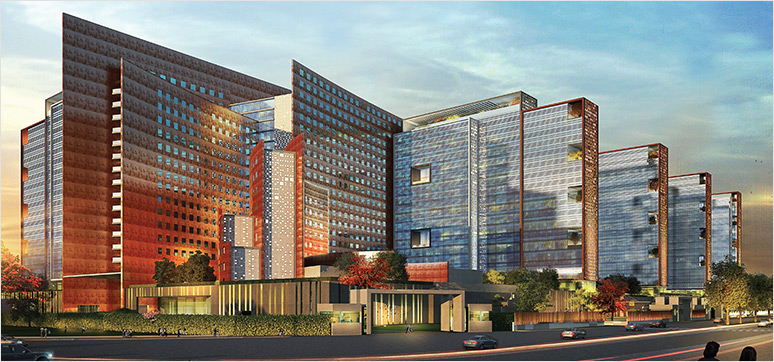
SR: It is a difficult question. Façade plays the role of skin in human existence. How can I peel off the skin and expect the organs and other parts to exist in our body? Skin or the external surface of the human body is what people see. And it is through the skin that we imbibe and it needs to be designed well. A building is just like a living organism. As we breathe through the skin, a building also feels the heat, and connects with the exterior through its skin. It is an integral part of the project and one cannot and should not see it separately.
I would say that the building skin or façade is the integral and most visible part of the building which casts the first aesthetic impression on a user, and is hence the identity of the building.
WFM: What are the key factors which you would have considered while designing a sustainable urban façade?
MR: The key points are:
- Knowing the building physics, which includes various scientific aspects like heat transfer, performance, etc.
- Knowing and using software for computing heat ingress.
- Knowing the position of the sun in the sky and the movement of the sun, and how the sun corresponds to the building skin. To understand the incidence of sun rays and decide on the opaque and transparent surfaces (where solar ingress should be allowed and where not).
- Analysing materials for the skin in order to make it more functional- in terms of shading, recessing, heat protection, light gain, etc.
- Understanding the angles of incidence and reflection, on heat and glare
These are all simple, elementary common sense approaches to façade design.
WFM: How do you decide or choose the façade materials for any project?
SR: Selection of materials for the façade is mostly based on the aesthetics, performance, sustainability, etc. So, it is a subjective as well as an objective decision. Cost is a major factor which determines the choice of materials, along with durability and customisation. It also depends on the desired image and kind of receiving audience the client is doing the project for.
WFM: Please tell us about the innovative technology and material which you have adopted in one or two of your recent projects.
SR: A perfect example would be the Zydus project, which we are doing in Ahmedabad, where we’re using Corten steel, concrete and traditional insulated glass blocks. The glass blocks and lighting together would create the desired sculptural façade. At this moment, we are most excited about this project.
Materials used in the façade of another built project, Pearl Academy is poles apart from Ahmedabad’s project. We have used simple cementacious Jali, which are often made on the road side. This Jali was used as a second skin to the entire building.
WFM: Please tell us about your project at Surat – one of your largest projects.
SR: The Surat Diamond Bourse (SDB) would be world’s largest office building and India’s second diamond trading hub, spread across approximately 36 acres. This upcoming bourse will accommodate over 4,000 offices of the diamond traders. At over 65 lakh Sq ft of built-up area, the Surat Diamond Bourse, will provide employment to 1.5 lakh people.
The enormous size of the project brings its own set of challenges. In this project, the orientation is such that no direct sun hits the occupants. The façade must have an impactful entrance, being such an enormous and inspiring structure. It must provide a sense of pride. Façades have been kept opaque from the west side, so that there is no direct sun hit during any time of the day. The common areas and foyers are not air-conditioned. Temperature is controlled purely by ventilation.
WFM: Your project for ITC is again very different from SDB, could you talk about this project in Kolkata?
SR: Yes, our project in Kolkata for ITC is completely different. It is a series of sets of smaller buildings. ITC is a project with a vertical morphology, whereas in SDB, the movement is mainly horizontal, having a very long morphology. The approach for the projects are also different. One exemplifies a building design approach while the other, due to its sheer scale, exemplifies an urban design approach.
WFM: Could you please brief us on a few factors that you consider while designing and executing façades of high-rise buildings?
MR: The façade design approach for high-rise and low-rise buildings are completely different. The imageability desired, the architectural aspirations, the design process, the sustainability of products (the products that are used at different heights are different in nature), installation technologies, etc., are very different for a low-rise and high-rise project. Hence the approach is also very diverse. It is hard to describe the difference in the approaches and processes which cannot be compared.
WFM: Most of the supertall buildings in India are designed by architects from the west and the consultants engaged are also from abroad, following different architectural language similar to the western countries. What is your opinion on this?
MR: Design should vary according to climatic condition and geographical location of a project. Since the climatic zone is completely different, replicating the design from the western countries does not make sense, and the design will not work here in India if the patterns are followed blindly. However, if they merge their existing technical know-how with a response to the climatic and socio-cultural conditions here, they could end up with successful buildings.
SR: It is not about Indian or foreign designers or designs, but is about the building physics, cultural needs of the people… all these aspects need to be looked into and the ones that understand these aspects and their inter-related dynamics, will design a successful building in India. But I am not a huge proponent of taking a blue glass tower from New York and building the same in Noida.
WFM: What are the key quality control aspects to consider while designing and installing façades?
SR: Façade consultancy is a very large profession in this country. An uninitiated developer or a client does not understand the need of a façade consultant. In the case of glass façades, they may still look for or employ a façade consultant. But when it comes to other materials like stone, they ignore it. They incorrectly believe a façade consultant is not required ‘just for sticking stones on the façade’.
Facade needs to deal with its own wind loads, and the calculations and computations are essential as the science behind it is very deep. People must understand and realize the importance of façade consultants. High-rise in India is a new typology too, which needs to mature a lot more. People are still learning the specifics of the typology. But I am sure that we will quickly gain the knowledge with the growth of the industry, which is happening at a very rapid pace.
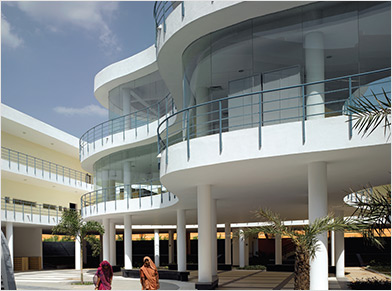
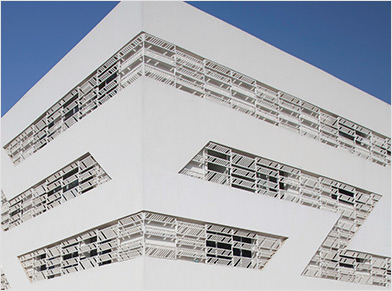
SR: I totally disagree with it.
We at Morphogenesis ensure that project cost and its documentation is in place before the contractor comes on board. The contractor is only there to execute what is on the drawing board. If correctly done, it is supposed to give the bill of quantities and costs. The contractor has nothing to do with the cost. It is a shoddy way of working, where one has half-baked design and the client then depends on the contractor’s input for cost. The only way a contractor gets involved in these kind of decisions is when the design and documentation of architecture and engineering is not complete.
WFM: What is the role of the façade in daylighting within the buildings?
SR: In sustainable buildings, like we design at Morphogenesis, we try to achieve 90 percent of the floor space to be naturally day lit. Besides the façade, you typically cannot get light to penetrate more than 8 to 9 meters from a façade. Therefore the best solution is not to make buildings wider than 18 meters. If you make it wider, incorporate those functions in the middle which do not require daylight. It is not just the function of façade alone, it is the question on the morphology of the building as well, i.e., the shape of the building, where by the façade will play its role in letting the daylight in.
WFM: Could you please talk about the shading applied on the building facades?
MR: The shading depends on the cost and the aesthetics. Also, you can use horizontal or vertical shading. All that is dependent on the design and the orientation of the building as well as occupant needs and energy targets set.
WFM: Could you please throw some light on your future projects, goals, some of the design intentions, and projects which you would like to do in future?
SR: What this country lacks is public buildings like museums and such allied infrastructure. For example, buildings like the Calatrava designed station at Ground Zero in New York. We need such remarkable pieces of architecture. I look forward to this country investing more in public architecture, and we would wish to play a role in how that evolves.
WFM: What is your advice to young architects who are just starting their practice?
SR: I strongly believe that if you don’t have the vision for your future goals, then you might as well do any job. Why specifically the art of an architect? It is a hard job. It does not pay that much. Then why do it. If you are intending to take up the job of an architect, you must have the vision and passion to take it forward. Our philosophy in life as far as work and the profession is concerned, is that architecture & design is a way of life, and it calls for a lifetime of commitment and conviction.
